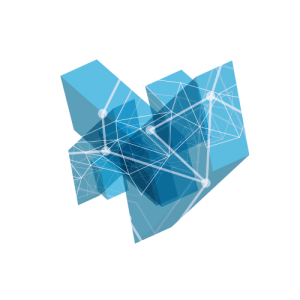Digital Transformation
In the transformation process from a simple technology supplier to a strategic partner, the contribution of the IT function to defining the transformation strategies of the corporate business will become increasingly significant; the focus of the CIO will shift from the management of systems that support business operations to the creation of systems that define the organization. The CIO will therefore have to expand its mental models to be successful in this planning and transformation. For decades, systemic thinking has been the decisive paradigm that has driven IT departments focused on engineering in designing solutions. Moving forward, new paradigms such as Theory of Constraints will need to be understood and woven into IT operations in order to provide a successful solution for a hyper-complex digital economy.
Translated from Digital Business Transformation Strategy Needs a Change of Perspective – Gartner
Digital transformation is perhaps the most important trend of our time, almost a digital revolution.
And like all (r)evolutions, even the digital one can bring enormous advantages: redesign and simplify processes, reduce redundancies and errors related to non-strategic manual activities, improve integration between all company stakeholders, generate greater efficiency, better operation, reduction of time and costs, using a combination of different technological solutions.
The list of technological solutions grows and updates daily with increasingly advanced and integrated systems, according to an approach aimed at reasoning for maximum convergence between systems and information flows, which run through networks, passing from the Web: automation, computerization, virtualization , cloud, mobile, Unified Communication and Collaboration, Internet of Things…. All this, with the possibility of combining the offline world with the online world, managing infrastructures, systems, applications and services in an extremely more flexible and dynamic way, thanks to the new logic of As a Service and Pay per Use inaugurated by the increasingly driven evolution of virtualization and the cloud
But digital (r)evolution can also generate resistance, opposition, rejection, as happens for all important changes, because they produce insecurity, instability, fears.
Engage innovation paths, both for large companies and SMEs, means reviewing internal operational processes and procedures for interacting with customers and suppliers, designing new digital products and services, broadcast on new online and offline channels, gain analytical skills of digital data.
Our company is able to support you in all phases of the digital transformation and innovation process, in parallel with your business strategies.
Our professionals, in addition to years of experience in highly complex digital transformation paths of business realities, they also have a deep understanding of the key technologies, as well as an excellent knowledge of the Microfocus solutions portfolio, the market leader in the field.
To deal with awareness the digitization process of your company, it is essential to first define your objectives and then carefully plan the various implementation steps; the questions the CEOs should ask themselves are:
- What does digital transformation mean for my company?
- What are the priorities?
- Where to convey the investments that enable business disruption?
- How to make the best use of consumerization and omnichannel users?
- How to become digital suppliers and capitalize on innovation?
- What is the value of channel partners in the digital supply chain?
- Why will Industry 4.0 make a difference in turnover?
The six pillars of digital transformation
Below are the six pillars of digital evolution, i.e. the technological areas that enable digital transformation (and disruption) within the company.
Below are the six pillars of digital evolution, i.e. the technological areas that enable digital transformation (and disruption) within the company.
1 – Automation
The progressive automation of the work has brought speed, efficiency and reduction of errors
2 – Computerization
The evolution of hardware and software have introduced and enhanced a new intelligence in process management
3 – Dematerialisation
Dematerialisation has triggered the virtuous circle of information, inaugurating new logics of integration and sharing among workers
4 – Virtualization
Thanks to a new generation software programming, physical resources are transformed into logical resources managed by a single centralized dashboard
5 – Cloud Computing
Moving the management of hardware and software on the network through new models of use and delivery has inaugurated the era of As a Service, pay per use and on-demand.
6 – Mobile
Mobile devices enhance individual productivity by bringing greater availability and flexibility to the world of work.


